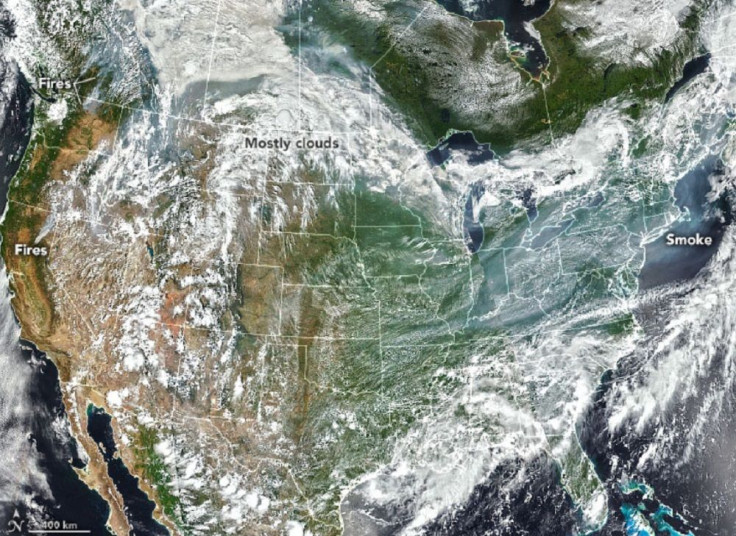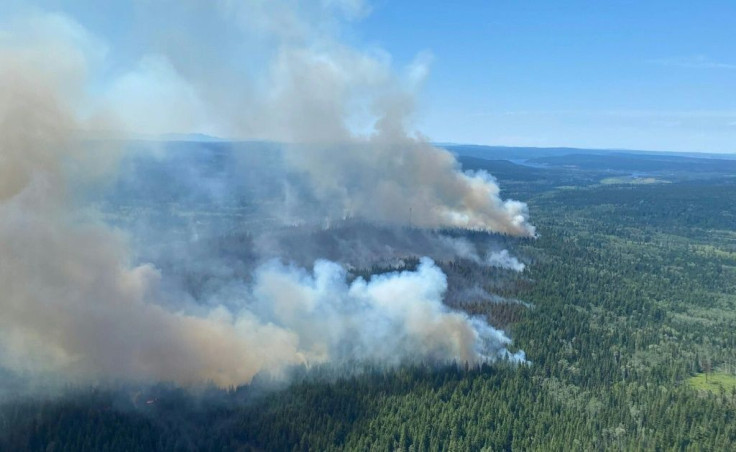Satellite Image Shows Wildfire Smoke Over North America Triggering Air Quality Warning
KEY POINTS
- Wildfire smoke also triggered air quality warnings in many areas this week
- Wildfire smoke passing over northeastern U.S. and Canada typically go unnoticed
- Much of the smoke "likely" came from the fires in Canada
Wildfire smoke made news this week for turning skies hazy and the sunset red. Even satellites in space caught the widespread effect of the wildfires.
Wildfire smoke from western North America passing over northeastern U.S. and Canada typically go unnoticed as they move at high altitudes, NASA Earth Observatory said. However, the wildfire smoke pouring into the U.S. Northeast certainly made itself noticeable this week.
In a natural-color image captured by the Visible Infrared Imaging Radiometer Suite (VIIRS) on the NOAA-20 and shared by NASA Earth Observatory, one can see the smoke traveling over the northeast Tuesday.

Apart from the hazy skies and unique red sunsets, the smoke also triggered air quality warnings in several areas. In New York City, for instance, the fine particulate pollution rose above 170, which is said to be a level that can be harmful even for people considered "healthy."
"That's a magnitude of particle pollution that New York City hasn't seen in more than a decade," atmospheric scientist at NASA's Goddard Space Flight Center, Ryan Stauffer, said, as per NASA Earth Observatory.
Earlier in the month, it was also VIIRS on NOAA-20 that captured the plumes of smoke coming from the cluster of wildfires in Canada reaching North Dakota, South Dakota and Minnesota.
Smoke from Ontario, Canada, has blown south into the United States. https://t.co/KU1doCl8Ir
— NASA Earth (@NASAEarth) July 13, 2021
Another image shared by NASA Earth observatory showed the mass density of black carbon, or soot, over North America on Wednesday.
"The black carbon data come from the GEOS forward processing (GEOS-FP) model, which assimilates data from satellite, aircraft, and ground-based observing systems," the agency explained in its statement.
On July 21, skies turned hazy in cities ranging from Boston to Washington, D.C., as #smoke from fires in Canada poured into the U.S. Northeast. https://t.co/uEKT57Igh5 pic.twitter.com/p3039471Yt
— NASA Earth (@NASAEarth) July 21, 2021
Soot is just one of the many types of particles that can be found in wildfire smoke, NASA Earth Observatory noted. Even though it is considered to be a short-lived pollutant, with a lifetime of just days to weeks, it can have impacts on climate, agriculture and health. For instance, black carbon and its "co-pollutants" are so small in size that they can penetrate to the deepest areas of the lungs, thereby assisting the transport of toxic compounds to the bloodstream.
According to the agency, although there are several forest fires currently happening in North America, much of the smoke that covered eastern U.S. "likely" came from the fires raging on the border of Manitoba and Ontario, Canada. The fires in British Columbia as well as in the U.S. Pacific Northwest may have also added "a small amount of smoke."

© Copyright IBTimes 2024. All rights reserved.






















